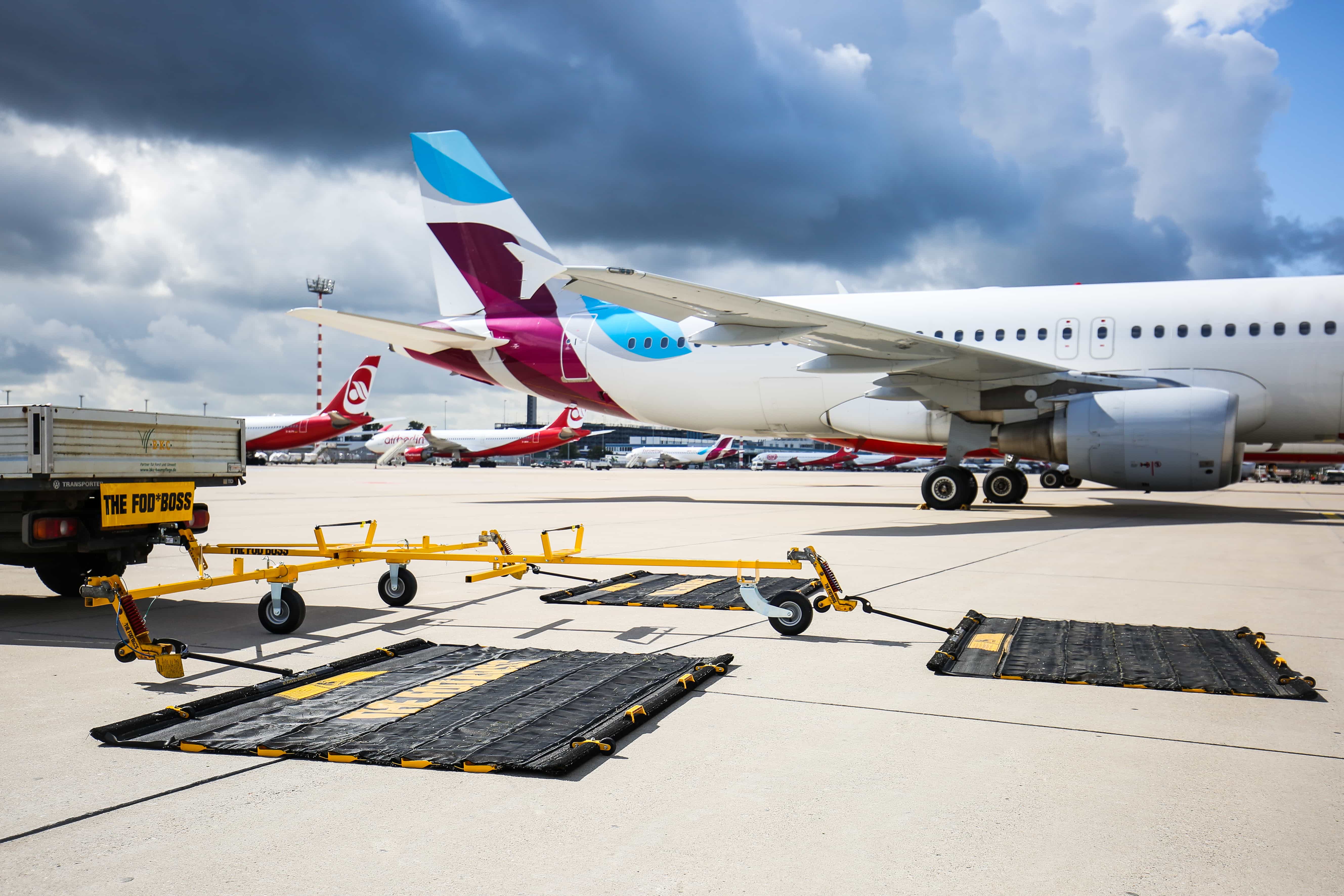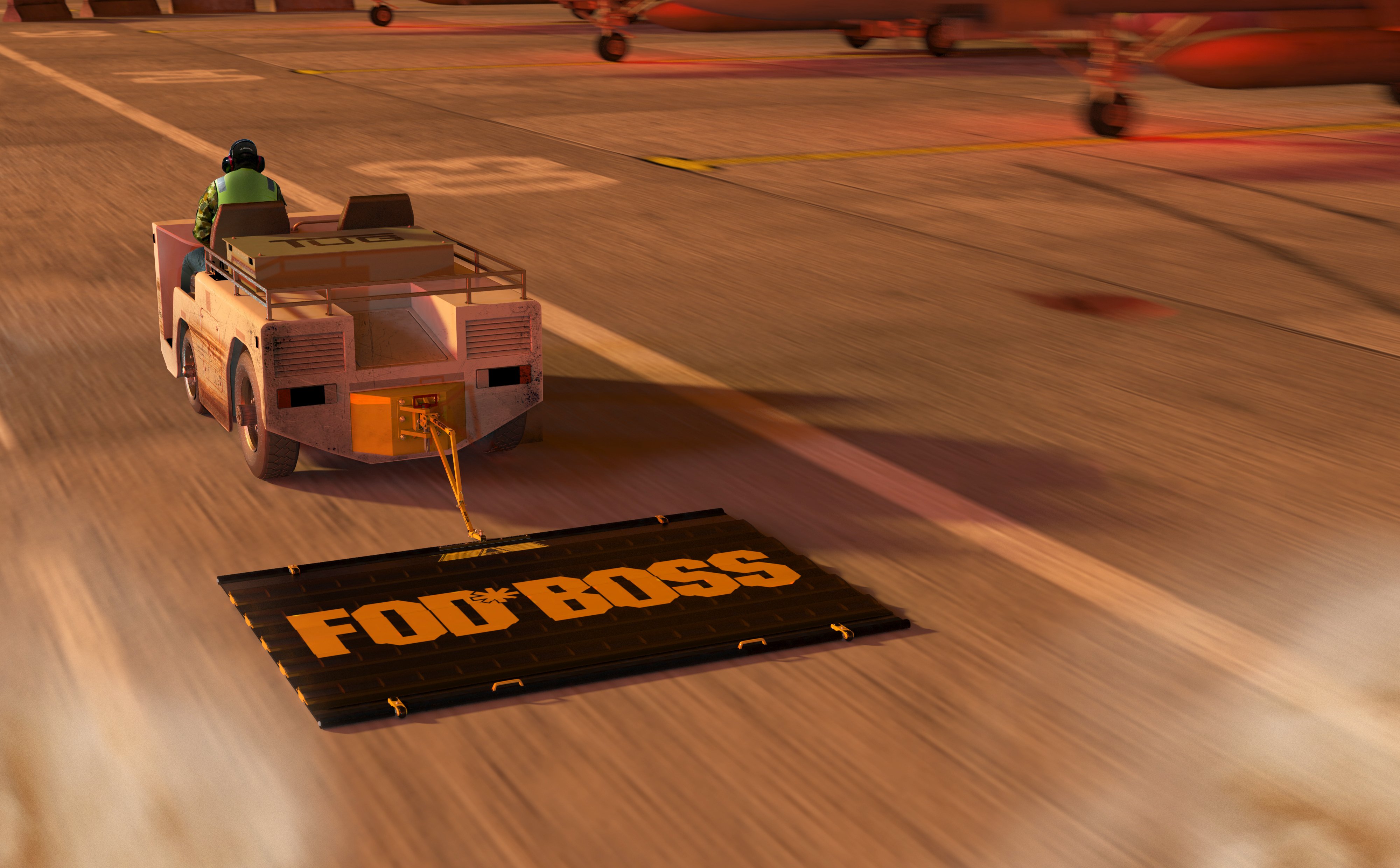Designing An Effective FOD Program
FOREIGN OBJECT DEBRIS (FOD): Foreign Object Damage (FOD) is a constant concern for all aviation facilities. Debris on runways, taxiways and aprons and ramps have caused countless incidents. A well-designed FOD prevention program can assist in identifying risks and the most vulnerable places for FOD production so that a strategy can be put in place to lessen or eliminate the threat of FOD.
FOD can be debris from aircraft or ground vehicles, tools, pieces of luggage, hardware, rocks, fragments of pavement, and wildlife. A FOD program should also take into account the potential for bird strikes and animal incursions.
Components Of An Effective FOD Program
FOD can damage aircraft or cause serious injuries. Even items as seemingly innocuous as paper clips, hats, and personnel badges can pose a risk to aircraft engines. FOD can be debris from aircraft or ground vehicles, tools, pieces of luggage, hardware, rocks, fragments of pavement, and wildlife. A FOD program should also take into account the potential for bird strikes and animal incursions. FOD can damage aircraft or cause serious injuries. Even items as seemingly innocuous as paper clips, hats, and personnel badges pose a risk to aircraft engines. FOD significantly increases the cost of repairs and maintenance and can lead to avoidable downtime.

A comprehensive FOD program can help mitigate these risks; here are a few steps to help guide you when setting up an effective program:
Establish a Process
An organized process of assessment, preventative action, corrective action, and monitoring of FOD removal strategies is required. Your FOD Management Plan must lay out elements of this process and needs to include:
-
Designation: Areas should be designated using a FOD risk analysis. An appropriate level of control must be established and implemented based on this assessment. Having the appropriate signage in place can promote awareness and compliance through communication.
-
Housekeeping: In addition to FOD removal, it helps to keep work areas organized and clean. Proper storage of items can help avoid items such as small tools becoming FOD. At the same time, appropriate waste management practices ensure that debris from places like aisles, workbenches, toolboxes, fabrication operations, and more are removed and cannot become a FOD problem.
-
Clean as You Go: Stick to established procedures, cleaning affected areas when work cannot continue or is completed so that work debris cannot migrate to an out-of-sight or inaccessible location. Areas should always be cleaned at the end of each shift or whenever you drop an item. If you think you heard something fall, it’s best to check and ensure something hasn’t been missed.
Any process must also include a method for protecting the product or tool. This includes the use of bags, covers, caps, and other means to protect against contamination. In addition, proper maintenance and cleaning of carts, containers, and pallets ensure products are stored, handled, and transported safely. Items also need to be protected against damage, whether from falling or part separation, with the proper packaging and secure storage.
Set Up A Way To Measure Performance | Results

Your target goal should always be zero debris. Therefore, it is essential to keep track of areas susceptible to FOD and measure FOD trends. To help with this, access to inspection results, incident reports, and feedback on progress must be available for analysis. All trend analysis should include details on where FOD most often occurs, where cleaning personnel have been, and where they plan to go. In addition, graphics of audit or incident data should be generated on a regular schedule and are a great way of communicating progress to the broader team.
Other measurement tools can include a checklist of the most frequently affected areas and be inspected as a report card. Performance reviews of employees tasked with FOD management help ensure they conform to management’s expectations and the most relevant standards that have been put in place. Comments, concerns, or complaints by customers should be taken into account as well. By measuring performance and results, workers have the information needed to understand what’s wrong and can then focus on improvement and future FOD mitigation initiatives.
Get Management Involved
For any FOD Management Plan to be successful, the senior management of your facility, air carriers, and servicing companies must be committed to the plan’s overall goals. For example, new employees should receive briefings on FOD during orientation and onboarding. At the same time, awards and recognition around the FOD Management Plan should be announced in visible and easily accessible locations. Senior management should also be involved in facility tours or ‘FOD Walks’ to fully comprehend what FOD is, the risks it presents, and that the broader organization takes it seriously. Only by ensuring that senior management has a proper understanding of FOD within the context of your airside environment will it be easier to have funding approved for FOD mitigation plans and processes. Also, remember, each AOA is unique and will require its specific processes. This may require additional funding, so this awareness and support are crucial to your success.
Invite All Operators At Your Airport To Get Involved
There are typically many organizations and entities operating at airports and aviation facilities. Most aren’t under the direct control of airport management. Ensuring their awareness and roles in preventing FOD within the airside environment is an essential step in a successful FOD Management Plan. It is suggested that one of the easiest ways to achieve this objective is to create a FOD Prevention Committee. A FOD Prevention Committee can help with the coordination to implement solutions to FOD issues at the facility. By ensuring all groups that operate within the airside environment have had input into the processes and procedures used to manage FOD, airport personnel, flight crews, ground workers, and all contractors will be on the “same page”, and FOD control plans are more likely to succeed.
Employee Training and Onboarding
Establishing an employee onboarding and training program is critical for FOD awareness. It’s essential that all employees receive FOD awareness training. It is also essential to determine the criteria and content of your training program, identify personnel training requirements, and establish training methods, whether via lecture, electronic methods, or others. Remember, people may learn best through different modalities, so ensure your training program covers both listening, seeing and doing learning orientations.

Recurring training criteria, such as content or training intervals, should also be established. To evaluate your training program’s effectiveness, it is also recommended that you measure employee competency, FOD-nonconformance, and other metrics that document program compliance and success. A valuable point to consider is that one cannot manage a process unless its outcomes are measured. Therefore, identify what outcomes are important to your airfield and individual AOAs, and then make sure your program has a way of ensuring achievement is measured. Only then can you say your FOD Management Plan is successful.
Establish Reporting And Investigation Procedures

Whenever there is a FOD incident, there should always be a thorough investigation to identify causes and events leading up to the incident. The goal is to prevent similar incidents in the future by identifying and implementing corrective action. Causes of a FOD incident can be determined through visual observation, location of an object, or, if severe enough, with a more comprehensive forensic analysis.
Incident reports should have a standard format to ensure all appropriate information is documented. For incidents that occur after flight operations, look to recording the manoeuvres performed, the taxi route, the timing of events, any environmental conditions, and the contact information of crew members. All reports should be forwarded to a designated representative or office that can track, analyze, and raise awareness of the problem.
Have The Proper Equipment
Ensuring you have the proper maintenance equipment is critical in dealing with any FOD problem. Each AOA has its own unique FOD production rates and FOD removal requirements. Runways, for example, will require that no flight movements are scheduled during the sweeping operations. The speed of those FOD sweeping operations are also going to be an important consideration. This will, in turn, influence the decision on what FOD sweeping tool is used or assigned to that AOA. Taxiways, while shorter than runways, can be quite congested so a flexible system may need to be a key consideration. The apron or ramp

areas are very busy with multiple movements occurring at any one time. Critically, awareness that GSE activities, aircraft movements, baggage-handling and personnel walking around all significantly influence when sweeping can occur and type of FOD sweeper is best for that AOA. As such, a number of different FOD sweeping tools may be worth considering, such as a friction sweeper mat system (FOD*BOSS) that compliments the mechanical sweeper, if you have one. This is why senior management needs to “buy into” your FOD Management Plan, thus preventing the trap of considering that “one FOD sweeper type can achieve all goals”.
Finally, while FOD is a significant financial burden to the aviation industry, mitigating and removing FOD doesn’t have to be expensive. An important point to consider is that equipment that costs more doesn’t necessarily mean they are more effective, nor more efficient. If you want to understand more about the potential savings different FOD sweeping technologies can offer your FOD Management Plan expenses, contact Aerosweep today and we’ll be more than happy to direct you to additional resources that can help you in your decision making processes.





